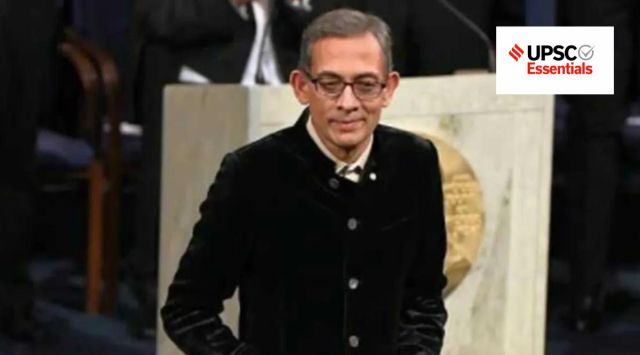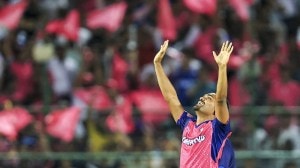- India
- International
UPSC Essentials: One word a day – RCTs
What are RCTs? Use of it got Abhijeet Banerjee and others win Nobel Prize. It is back in news. Aspirants must know about it not only for prelims but also GS- Social Justice , Poverty issues and case studies. Solve MCQ given below.
 RCT is a research design for experimental studies, which economists Michael R Kremer, Abhijit Banerjee and Esther Duflo used in their research.
(The Nobel Prize/Twitter)
RCT is a research design for experimental studies, which economists Michael R Kremer, Abhijit Banerjee and Esther Duflo used in their research.
(The Nobel Prize/Twitter) Take a look at the essential concepts, terms, and phenomena from the static and current parts of the UPSC-CSE. Also, solve the MCQ.
Word: RCTs
Subject: Economy and Social Justice
(Relevance: A Nobel laureate recently mentioned this term. This methodology yielded in Economist Abhijeet Banerjee and others winning the Nobel Prize. It applies to the Indian context. Used in the perspective of Poverty. It is not untouched by criticism. Try to think along on the lines of Ethics as well, maybe you can use it in your steps of some case study. Do attempt the MCQ and point to ponder.)
Why in news?
—Economist and Nobel laureate Michael R Kremer has said that for a diverse country like India randomised controlled trials (RCTs) must be carried out at multiple sites for better analysis and to see differences across states.
What is RCT (Randomised Controlled Trials)?
—It is a research design for experimental studies, which economists Michael R Kremer, Abhijit Banerjee and Esther Duflo used in their research.
—They went on to win the 2019 Nobel Prize winner in Economics.

—They had made use of RCT for their research on poverty.
—It is usually undertaken to study the effects of a new entrant in an environment.
—According to Kramer, the idea involved in RCT is to experiment at multiple sites and then do a better analysis and see the differences across the sites.
—Simply put, RCTs involve dividing a population into smaller groups, in order to comparatively see the outcomes of an external stimulus.
What did the noble citation say of the trio’s work?
—“The research conducted by this year’s laureates has considerably improved our ability to fight global poverty…Their new experiment-based approach has transformed development economics.”
What is an example of randomised controlled trials?
Example:
—Aim of a study: To understand whether a free grains distribution scheme helped improve the nutrition levels among people living in a district.
—Objective: To understand what the overall impact of introducing something new could be.
—Steps:
1. Researchers will first create two groups within the population, and then put people into those groups randomly.
2. One group (called the control group) does not receive the grains or the external stimulus, while the other group (treatment group) does.
3. After a designated period of time, details of how both the groups are doing would be collected.
What has been one successful example of RCTs application?
—Case: Schools in Mumbai and Vadodara
—RCTs application showed neither providing more textbooks nor free school meals improved learning among students.
—Instead, in schools in Mumbai and Vadodara, the biggest problem was that teaching was not sufficiently adapted to the students’ needs.
—The Nobel laureates had billed RCTs as a method to focus on more day-to-day answers to problems of poverty and deprivation, such as the delivery of basic amenities.
Why are RTCs criticised?
—Critics say the method cannot be used in all cases, while others argue it is fundamentally flawed.
—Angus Deaton, the winner of the Economics Nobel in 2015, had said “randomisation does not equalise two groups”, and warned against over-reliance on RCTs to frame policies.
—Like him, many believe that two or more groups carved out from a singular population living in an area may not be totally random.
—There may be more women in one group, or one group may have more people having some kind of distinctiveness that affects the result.
—As a result, the outcomes may not give an accurate view, and the very use of a scientific experiment tool in social sciences was questioned.
—Further, RCTs also cannot be used to study something after it has happened, they need to be planned beforehand.
—And, while RCTs show results for a particular population in an area, it may not be proof that the same results will be achieved elsewhere, especially if the sample size is not big or the trial deals with a very specific kind of population sub-group.
—However, many agree that for a limited purpose RCTs have helped to tweak systems and improve outcomes.
Point to ponder: Poverty is the worst form of violence. Explain.
MCQ:
Which of the following statement is incorrect?
a) Chronic poor are the people who move in and out of poverty on a regular basis.
b) Gender inequality is one of the characteristics of people below the poverty line.
c) Capitalist countries have a greater prevalence of relative poverty.
d) Underdeveloped countries have a greater prevalence of absolute poverty
(source: Explained: What are randomised controlled trials, how do they work? by Rishika Singh)
Apr 23: Latest News
- 01
- 02
- 03
- 04
- 05






































